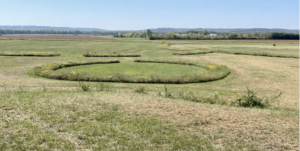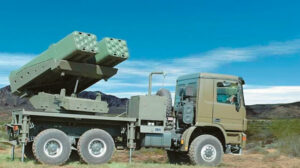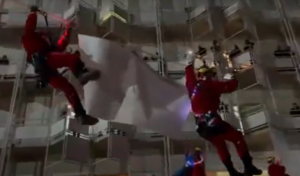Dr. Bret Ruby is a National Park Service archaeologist who drives a ruby-red Camaro with the license plate DR RUBY.* He is notably passionate about his work, which is why I felt a little guilty on a recent Ohio morning as he enthusiastically showed me around a historic monument that did not, honestly, look like all that much to me. We stood on a hill overlooking the Hopeton Earthworks near Chillicothe, Ohio, south of Columbus. Nearly 2,000 years ago, Native Americans built 800,000-square-foot geometric shapes in this meadow, an enormous circle and square aligning with the movements of the sun and the moon.
That is, obviously, very impressive. The problem was what had happened since then: centuries of erosion, followed by more centuries of farming and plowing, which meant that even from above, it took me a long time to see the square and circle down in that field. It mostly looked like a scrubby field with a gravel plant on the other side. Eventually I picked out a few straight lines of dark grass, a gradual curve at the far end of the meadow.
“Hercules” actor Kevin Sorbo says Hollywood canceled him because of his Christian beliefs
As we ambled down the hill, Ruby pointed out a swell in the landscape. “That hump there is the earthwork wall. That’s melted out from plowing. These walls were once 12 feet tall.” I nodded in admiration, and I did admire these walls, in theory. In the distance, a staffer drove a tractor; the NPS engages in “interpretive mowing,” Ruby said, using differing lengths of grass and a mix of native plants to distinguish the earthworks for visitors.
Continue here: Slate
Ask me anything
Explore related questions





